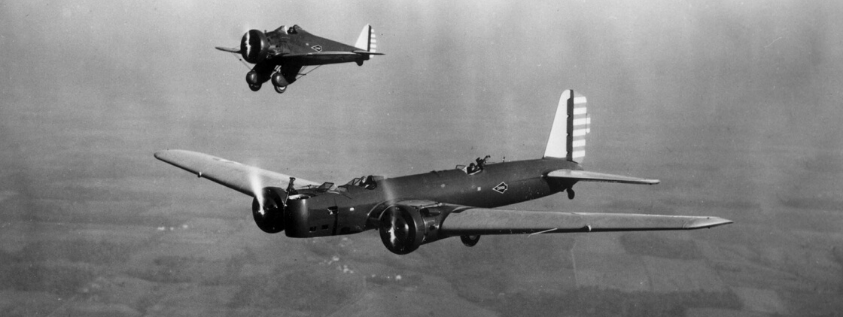The history of Boeing begins on July 15, 1916, when a company called Pacific Aero Products Co. is established in Seattle (USA). At that time the company was nothing more than a small factory of seaplanes and aeronautical parts located by the Duwamish River.
In 1917 its founder William E. Boeing changed the name of the company to Boeing Airplane Company and built two Model C seaplanes for the American army, seeing that the latter would surely need new planes because of the beginning of the First World War that same year.
Growth of the company
Once the war was over, Boeing dedicated itself to making airmail flights from Seattle to Victoria, while developing new and increasingly advanced aircraft including the Boeing B-1 which made its first flight in 1919 and the Boeing 8, which first flew in 1920.
In addition to this, the company developed several fighter models such as the PW-9 or the P-12/F4B that made Boeing the leading fighter company during the next decade.
Over the years, Boeing achieved enormous relevance in the aeronautical sector and soon ventured into the production of missiles and space satellites, something it still does today.
With the advent of World War II, Boeing built large numbers of B-17 Flying Fortress and B-29 Superfortress bombers, rising to 12th place in the list of U.S. companies for wartime contract value. Interestingly, corporations in the aviation industry cooperated during the war. Boeing received the collaboration of Lockheed Aircraft, Douglas Aircraft, Bell Aircraft and Glenn L. Martin Company for the assembly of its bombers.
Commercial Aviation
Already in the 1950s, Boeing focused its efforts on the development of commercial and passenger airplanes, and it was then that the mythical Boeing 707, the first jet passenger plane in the United States, appeared, becoming a leader in the manufacture of jet airplanes.
In the 1960s, Boeing participated in the manufacture of the Saturn V rocket used in NASA‘s Apollo and Skylab programs.
Just when it seemed that everything was going well for the company, Boeing suffered its worst crisis. In 1970 the military cut back significantly on military spending on aircraft, the Apollo space program was slowed down, the United States suffered the 1969-70 recession and Boeing had a $2 billion debt that it acquired to develop the 747 business model.
All that was not enough to bring down the giant that was Boeing at the time, and after the first flight of the 747, Boeing revolutionized the aviation industry forever.
From then on, with the economy a bit healthier, the company continued to develop new models of commercial aircraft, such as the famous 737 and 777 in 1994.
In 1996 and 1997, Boeing brought together four of the most important aviation companies in history into one company, acquiring Rockewell International, Douglas and McDonell. In 2000, it decided to expand its field of action by acquiring the world’s largest producer of communication satellites, Hughes Space & Communications, which would become Boeing Satellite Systems.
Boeing today
In 2019 the Boeing 737-8 MAX was temporarily banned due to a series of catastrophic accidents on commercial flights. This logically led to a huge devaluation of Boeing shares on the stock market and its status was seriously questioned.
Boeing is currently developing the 777-8X and 777.9X, the largest and most efficient twin-engine commercial jets in the world. With this model, Boeing intends to restore the damage done to its 737 model by its multiple accidents and have its planes once again perceived as extremely safe.
Do you dream of being a pilot? Become a pilot with EAS Barcelona, we are waiting for you.
